Earthworks and Cairns: Burnley at the time of Isaiah
Burnley is sometimes known for its low house prices, suggesting a lack of demand to live there. In 700BC, it was a much sought-after location. There’s a couple of square miles or so between Worsthorne village and Briercliffe district which contains two stone circles, four tumuli (ancient burials sites, now mounds) and three other ancient earthworks. The area enjoys wonderful vistas of Pendle and the valleys between.
According to John Lamb, a Lancashire Conservation Officer and Prehistoric Archaeologist, writing in Lancashire’s Sacred Landscapes (2015), that marked on the ordnance survey as Twist Castle is a Romano-British farmstead. In other words, Romans or Roman British people farmed this area, and this was their home. It’s currently something of a dump for old wood and junk.
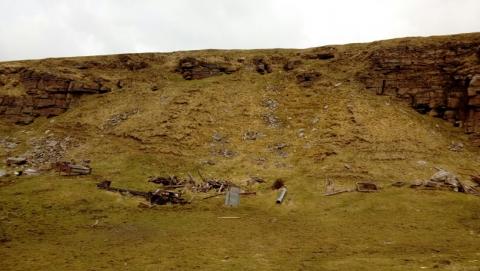
Slipper Hill Stone Circle he dates to before 701BC, placing it in the Bronze Age. As far as stone circles go, it’s pretty poor: Castlerigg it ain't. The stones have been disturbed, some have disappeared, and modern debris clutters the site. Was the original a place of worship? A calendar? We do not know.
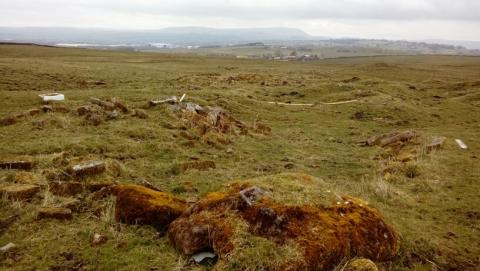
Archaeologist Walter Bennett’s (1946) survey classed the ‘Ringstones’ site as Roman. He quotes a 1925 excavation in which it was found to be ‘a rectangular enclosure 50 yards square, surrounded by a mound or rampart 2 yards wide and one yard high’.
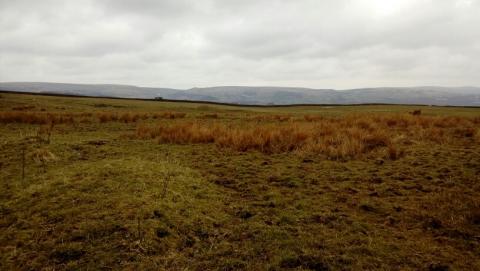
Pike Low Bowl Barrow Tumulus is a circular mount atop a steep hill. I met the local farmer who gave me permission to ascend it. He informed me that it was the burial place of an ancient princess, whose remains were dug up and moved a few generations ago. Fanciful perhaps, but one wouldn’t go to the trouble of burying any Tom, Dick or Harry up there.
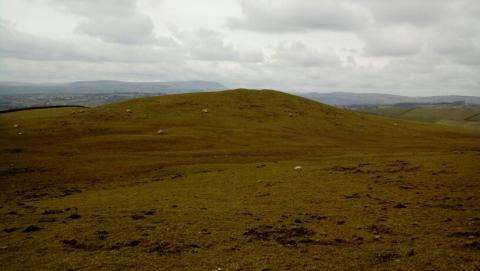
El Clough Ring Cairn and adjacent Barrow are near to the Princess’ grave mound. The former, Lamb unhelpfully dates as 500,000 BC-42 AD, and the latter 2500-700 BC.
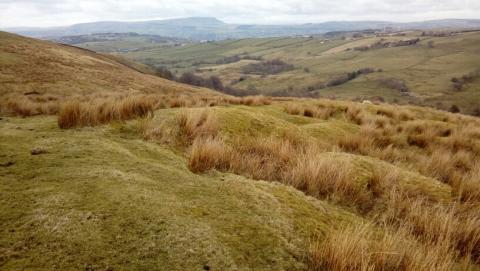
The Beadle Hill Earthwork he again claims is from the Bronze Age, ie prior to 700BC. On the other hand, Paul Bennett, The Northern Antiquarian, states that Beadle could come from ‘Beadlo‘ which is battle in Old English and may refer to a Saxon battle (Brunanburh at nearby Nelson?). If the experts are puzzled, so am I.
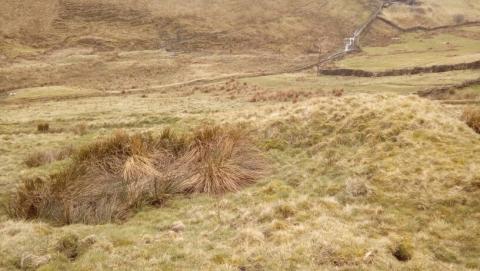
As many readers of this blog are interested in the Bible, let’s see what was going on in the Middle East at the same time. Assuming the earthworks come from the later dates, then we can say that our mysterious princess was buried around the time of Isaiah and Hezekiah. If a little earlier, then it corresponds to the ministries of Jonah and Hosea:
790 BC Azariah's good reign 2 Kings 15
790 BC Uzziah Reigns in Judah 2 Chronicles
766 BC The Words of Amos Amos 1 - 9
760 BC Jonah Sent to Nineveh Jonah 1 - 4
753 BC Hosea's Prophecies Hosea 1 - 14
750 BC Jotham Succeeds Uzziah 2 Chronicles 27
742 BC Wicked Reign of Ahaz 2 Chronicles 28,
739 BC Isaiah's Vision and Commission Isaiah 6
735 BC Isaiah's Prophesy of Immanuel Isaiah 7
735 BC The Word of the LORD to Micah Micah 1 - 7
730 BC Isaiah Prophesies a Child Is Born Isaiah 9
730 BC Isaiah Prophesies the Root of Jesse Isaiah 11
730 BC Isaiah's Joyful Thanksgiving Isaiah 12
725 BC Hoshea the Last King of Israel 2 Kings 17
722 BC Israel Led into Captivity 2 Kings 17:6
721 BC Strange Nations Transplanted into Samaria 2 Kings 17:24
716 BC Hezekiah's Good Reign 2 Chronicles 29
715 BC Hezekiah proclaims a solemn Passover 2 Chronicles 30
715 BC Idolatry is Destroyed 2 Chronicles 31
712 BC Hezekiah's Illness and Healing 2 Kings 20,
711 BC Hezekiah Shows Treasures 2 Kings 20:12,
711 BC Isaiah Prophesies Captivity and Restoration Isaiah 40 - 66
701 BC Sennacherib Threatens Jerusalem 2 Kings 18,
701 BC Korah's Psalms of Refuge (2Ch 32) Psalms 46 - 48
701 BC Hezekiah's Prayer 2 Kings 19,
Ancient Britons did not write things down, which is why the period is so mysterious. Our ancestors are silent, except when they speak from their earthworks. God the Creator, however, was not silent, revealing spiritual wisdom to Isaiah and his fellow prophets. To think that God would call the descendants of these stone-worshipping pagans to join His Israel is marvellous indeed:
I took you from the ends of the earth,
from its farthest corners I called you.
I said, ‘You are my servant’;
I have chosen you and have not rejected you.
Isaiah 41:9
- Log in to post comments


 Sunday Worship 10.45am & 6.00pm
Sunday Worship 10.45am & 6.00pm